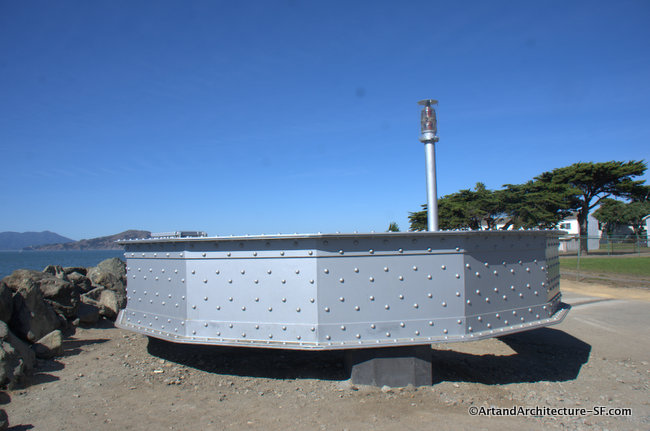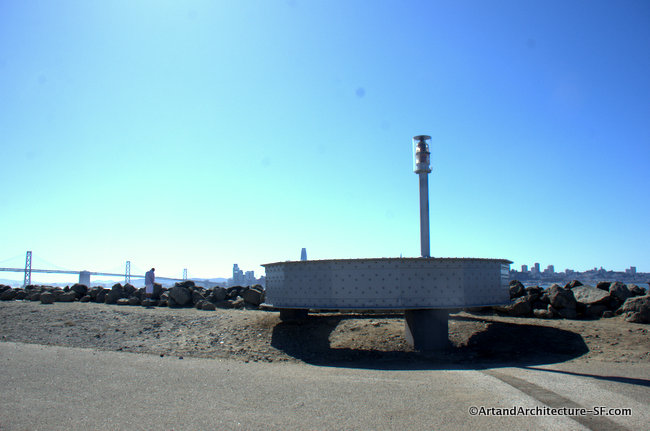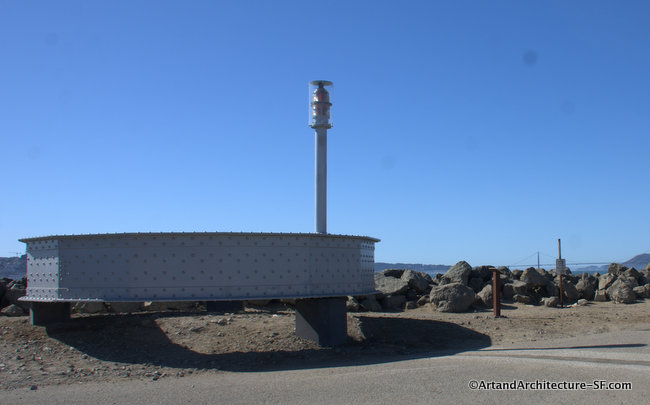699 Avenue of the Palms
Treasure Island

While much of Treasure Island is under construction you must reach this piece via a detour, the road will end on 9th Street near Avenue B.
In 2015, the historic east span of the Bay Bridge was taken down and its remnants granted to 15 artists around the state. One of these artists was Tom Loughlin a San Francisco based conceptual artist who received 36 tons of steel from the bridge.
The piece, Signal, is meant to function like a giant tuning fork vibrating at 35 hertz, the frequency of a foghorn: “You’re gonna feel it more than hear it,” Loughlin stated.

Signal with the Bay Bridge in the background
According to an SFGate interview with Loughlin: “The tactile addition stems from Loughlin’s interest in understanding the way systems connect — the mind and body, as well as “language, religion, nations, and literal infrastructures like tunnels and roadways.” He’s also interested in how systems fail.
For instance, the new span, which was replaced in 2014, only 25 years after it was damaged in the 1989 earthquake, is already beginning to rust. “Was the bridge we built in 1935 better than the one we just built?” He muses, “It’s an open question.” He’s hoping his sculpture, will prompt people to stop and ask: “What tools are we building and how are they serving us?”
Born in Saint Louis, Laughlin received his MFA in New Genres from the San Francisco Art Institute and his JD from the University of California, Berkeley.

Signal with the Golden Gate Bridge in the background
A sign near the piece helps explain the way in which the piece vibrates:
The sculpture is composed entirely of bridge-building material and weighs more than 22 tons. The steel is vibrating at its natural resonant frequency, like a tuning fork. This vibration is initiated by electronic equipment inside the sculpture and enhanced by the steel. Elastomeric pads between the steel and the concrete bases allow the ring to vibrate freely, a small departure from their intended use – to isolate bridge columns from roadway movement.